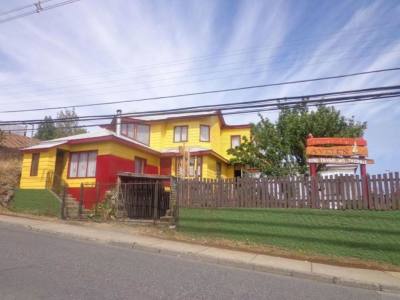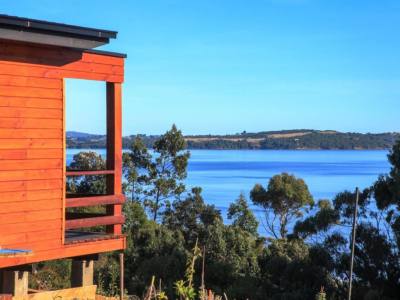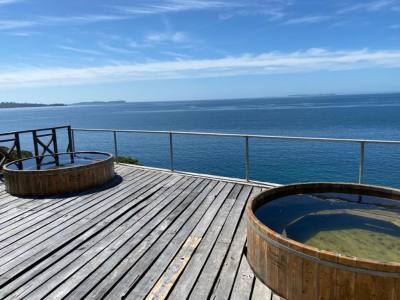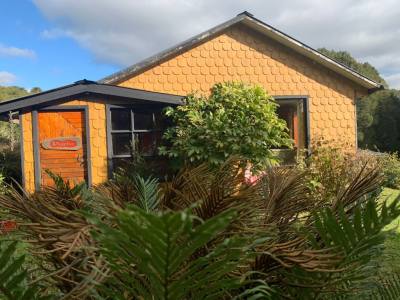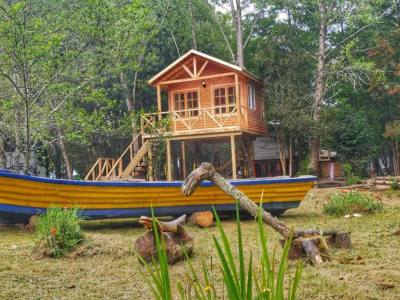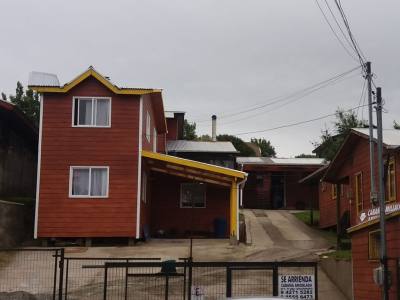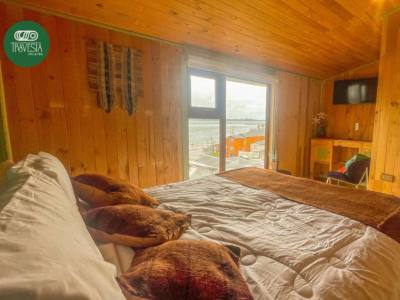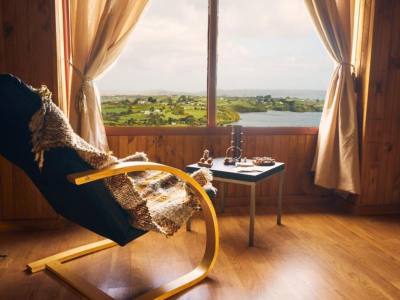Caulín Bay lies between the port of Chacao and the City of Ancud, on the Eastern coast of Chiloé Island. When the tide is low, this beautiful beach offers an ideal shelter for migratory birds which choose this place as their season habitat. A wonderful population of flamingoes, black-necked swans, herons and seagulls stands out amongst the great variety of birds which may be easily spotted in this singular place. This is the reason why numerous tourists visit this nook all year round.
Worshipping Nature
Furthermore, zarapitos (small birds of the Scolopacidae family), ralladores (or rayador, birds who fish on their flight, from the Rynchopinae family), and several kinds of ducks, herons and seagulls fly continuously over the shore. Used to their colorful presence, the inhabitants of the quiet village of Caulín have wisely developed their agricultural and fishing activities by making good use of the natural resources and establishing a direct relationship with their environment. For such reason, Caulín was named Sanctuary of Birds, a kind of pride all residents express in a festival they celebrate each January. Likewise, the town has rescued the cultural traditions of its Huiliche ancestors and presented it to visitors through representative handicrafts and regional festivals such as “la mariscada” (a seafood festival). This event is celebrated when the sea recedes almost one kilometer and the beach is sown with seafood the villagers pick up to produce their typical dishes, such as curanto. Thus, amongst customs and landscapes, Caulín gives evidence of how man can establish a fruitful co-existence with the bird fauna and the rest of the autochthonous animals.
Karina Jozami
Eduardo Epifanio















